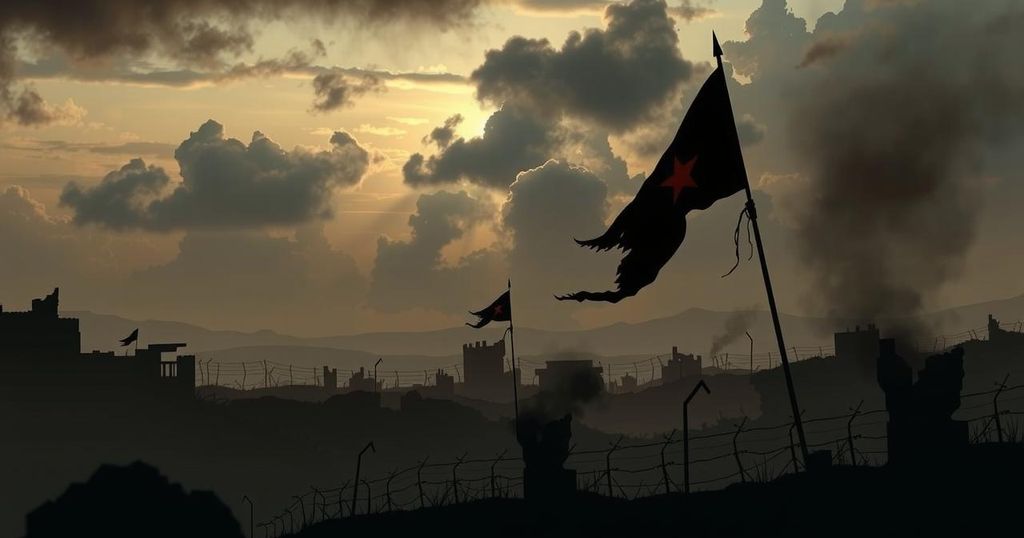Changing Balance of Power in Myanmar: A Post-Coup Analysis
Myanmar’s political landscape is undergoing a significant shift as opposition forces unite against the military junta, which has maintained power since 1962. The junta’s expected rapid consolidation of power post-2021 coup has faced major challenges from the Peoples Defence Forces and various ethnic armed groups. Approximately 86 percent of the country’s territory is not under stable junta control, with significant territorial gains made by resistance forces. The military has struggled with declining personnel and morale amid ongoing armed resistance. With humanitarian crises worsening, the junta’s recent peace overtures have been met with rejection by the opposition. The trajectory likely favors the resistance, with potential for further gains against the junta.
Myanmar is experiencing a significant transformation in its political dynamics, which poses a challenge to the military junta’s enduring authority. The military has been in power since 1962, initially exercising direct control, then transitioning towards a semi-democratic framework following 2012, and briefly presiding over a fragile democratic phase from 2015 until the coup in 2021. The junta’s expectation of swiftly consolidating power and quelling resistance, as they had successfully done during the 1988 uprising and the 2007 Saffron Revolution, has been thwarted by an unexpectedly robust opposition. This opposition is represented by a coalition of ethnic armed groups and civilian militias, united in their objective to dismantle military governance. What commenced as a widespread civil disobedience movement has escalated into a comprehensive conflict. The armed forces of the National Unity Government (NUG), known as the Peoples Defence Forces (PDFs), have demonstrated significant resilience, with assistance from Ethnic Armed Organizations (EAOs), to conduct offensives against military forces, particularly in border regions, demonstrating a resolve to overthrow the junta. According to the SAC-M report, as of April 2024, approximately 86 percent of Myanmar’s territory—encompassing 67 percent of its 55 million population—remains beyond stable junta control. Around 30 townships are reportedly under at least 90 percent control by resistance forces, with 14 of these having been entirely secured by armed groups, indicating a pronounced shift in favour of resistance elements. Resistance forces have successfully taken over more than 53 towns throughout the country, with significant gains in districts adjacent to India, where military forces have seemingly lost all control except in specific self-administered districts. In regions bordering Thailand and China, resistance groups have also gained substantial ground, further isolating the junta. Concurrently, Myanmar’s military has suffered considerable losses, with its numbers dwindling to roughly 130,000 personnel due to desertions and battlefield defeats. Poor morale, inadequate support for injured soldiers, and diminished cohesion within military ranks have compounded the junta’s difficulties. Intelligence failures and outdated technology have further hampered military efforts, as demonstrated during the successful Operation 1027, wherein resistance forces executed drone attacks targeting military installations. Efforts by the junta to reclaim lost territories have met with limited success. The initial national offensive, dubbed Operation Aung Zeya, aimed to displace ethnic Karen forces from critical trade towns, but the operation was marred by challenges stemming from the difficult terrain and ongoing resistance. Subsequent operations targeting northern Shan State and Karenni State have similarly failed to achieve significant success against resilient opposition forces. In light of the ongoing turmoil, the junta’s control may continue to erode, particularly as it grapples with an economic crisis characterized by widespread shortages and a deteriorating humanitarian situation. The number of internally displaced persons has surged to over four million since the coup, with millions more facing acute food insecurity. The junta’s recent invitation for peace talks with opposition groups is viewed as an attempt to stabilize its power, despite historical precedents indicating a pattern of alternating between oppression and political concessions to fragment oppositional unity. The offer for dialogue appears to be an effort to engage external actors rather than addressing internal demands for a more democratic governance structure. Resistance groups have steadfastly rejected these overtures, maintaining firm stances on crucial demands, including the disbandment of the military’s political role and a commitment to federal governance. While the junta remains influential in the capital, the overall trajectory appears increasingly favorable to resistance forces, amid growing internal dissent within the military leadership and continued external isolation. The capacity of resistance forces to sustain their momentum and exploit divisions within the junta will be crucial in determining Myanmar’s path toward democracy.
The political landscape in Myanmar has been dominated by military rule since 1962, with several notable shifts towards semi-democratic governance. The military attempted to maintain a façade of democracy from 2012 until the coup in 2021 but faced immense public resistance leading to civil disobedience and armed opposition. The ethnic diversity and the presence of various armed groups complicate the political environment, making the resistance against the junta a multifaceted conflict. The analysis covers the dynamics of control over territories, the resilience of resistance groups, and the military’s response strategy amidst dwindling resources and morale. Understanding these elements is crucial for comprehending the ongoing political crisis in Myanmar.
The evolving conflict within Myanmar underscores a critical juncture for the nation’s governance. As resistance forces gain ground and the military junta’s control continues to diminish amid internal dissent and economic strife, the future remains uncertain. The junta’s attempts at political outreach may be too late to regain the support of the populace, and the steadfast demands of resistance groups may complicate any potential dialogue. Overall, the power dynamics favor the resistance, challenging the junta’s longstanding authority and highlighting the need for a comprehensive resolution to the conflict.
Original Source: www.orfonline.org








Post Comment